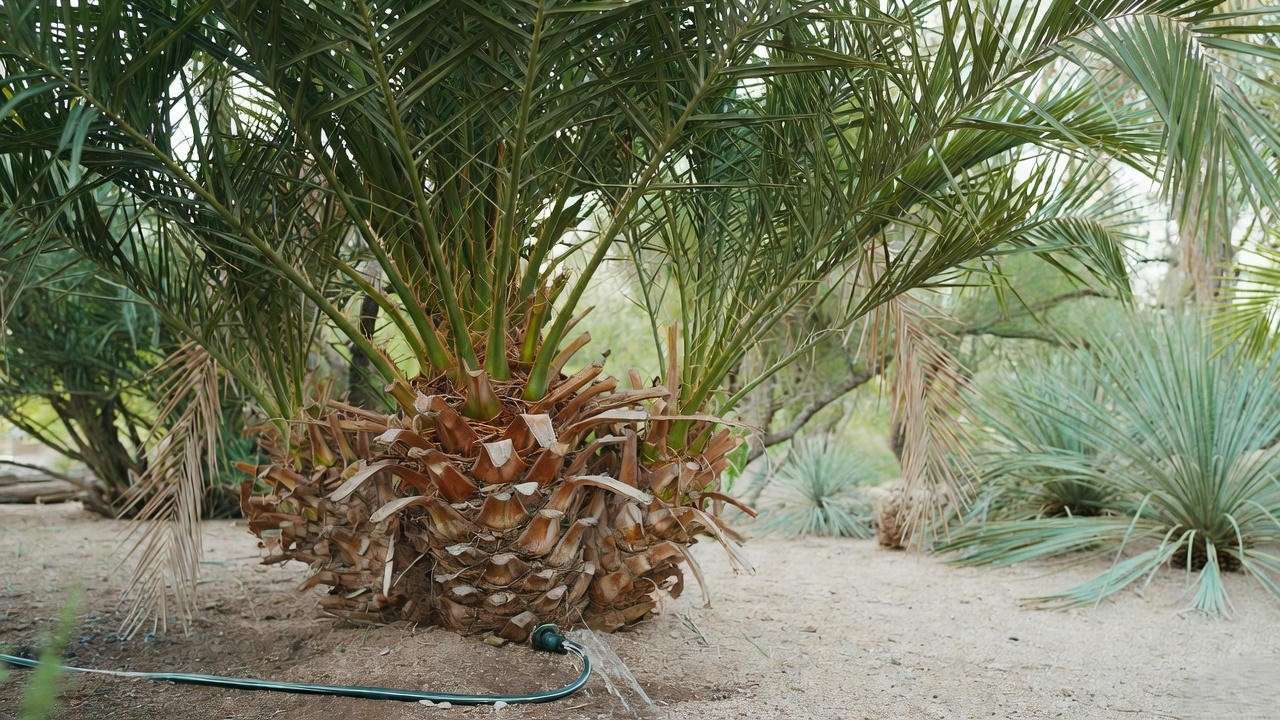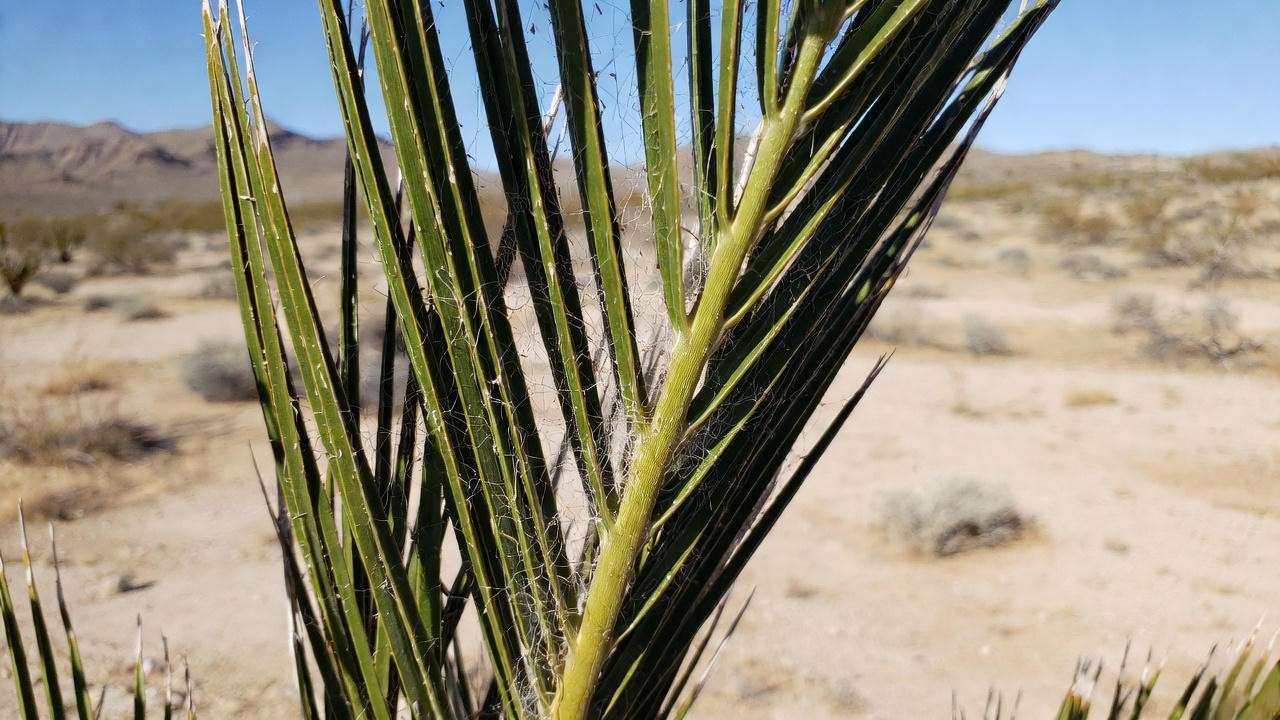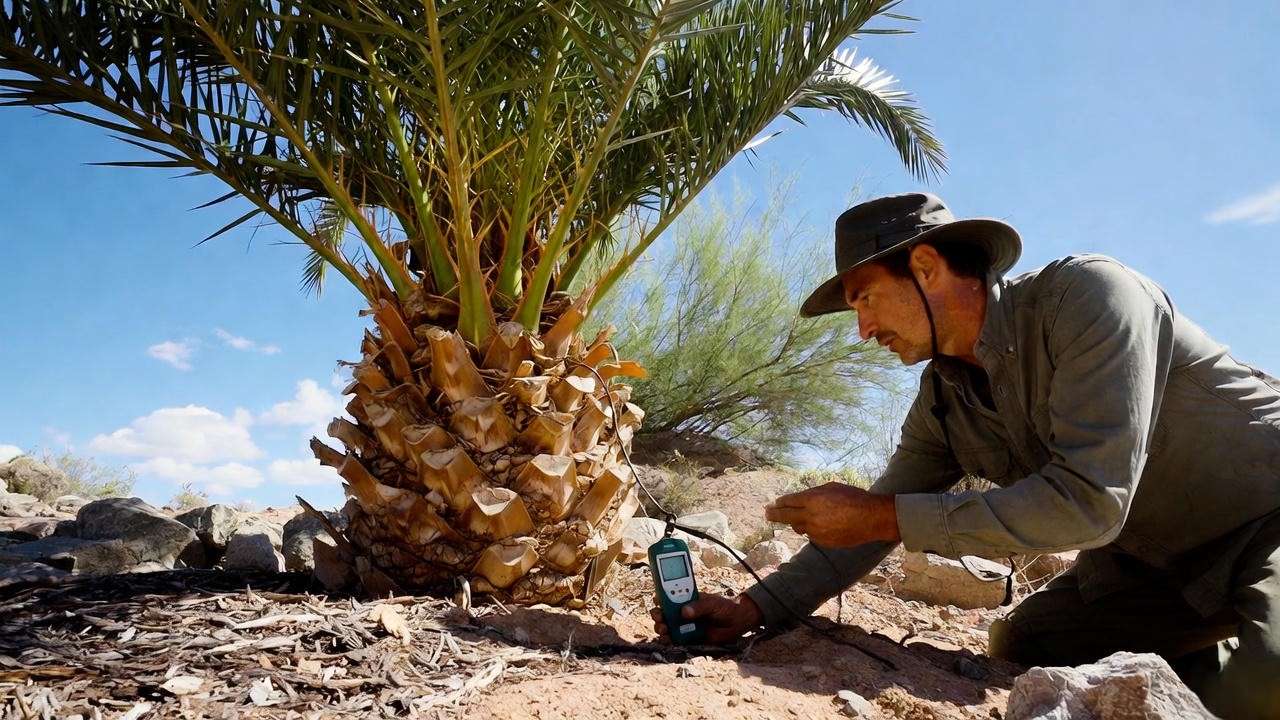Picture this: a vibrant Arizona sunset, with the silhouette of a majestic Arizona palm tree swaying gently against the fiery sky. These desert icons transform yards into lush oases, but keeping them healthy in Arizona’s harsh climate is no small feat. From scorching summers to nutrient-poor soils, palm trees face unique challenges that can leave them struggling—or worse, dying. As a certified arborist with over a decade of experience in desert landscaping, I’ve seen it all. In this guide, I’ll share 7 essential tips to ensure your Arizona palm trees thrive year-round, backed by insights from the University of Arizona Extension and local experts. Ready to make your palms the envy of the neighborhood? Let’s dive in!
Understanding Arizona Palm Trees: Types and Unique Needs 🌵
Popular Palm Tree Species in Arizona
Arizona’s desert landscape is home to several palm species that thrive despite the heat. The Date Palm (Phoenix dactylifera) is a favorite for its edible fruit and towering presence. The Mexican Fan Palm (Washingtonia robusta) offers slender trunks and lush fronds, perfect for narrow spaces. Meanwhile, the California Fan Palm (Washingtonia filifera) is a hardy choice for its drought tolerance. Each species has unique needs, so matching your palm to your yard’s microclimate is key. For example, Date Palms love full sun, while younger Mexican Fan Palms may need partial shade. Expert Tip: Consult a local nursery to select the best species for your soil and sunlight conditions.

The Desert Challenge: What Makes Arizona Palm Care Unique
Arizona’s climate is a double-edged sword for palms. With summer temperatures soaring past 100°F and humidity often below 20%, palms face constant water stress. The state’s alkaline, rocky soils also lack essential nutrients like magnesium and potassium, critical for palm health. According to a University of Arizona study, over 30% of newly planted palms fail within their first year due to improper care. Understanding these challenges—extreme heat, low moisture, and poor soil—is the first step to success. By addressing these factors with targeted care, you can help your palms flourish.
Tip 1 – Watering Arizona Palm Trees the Right Way 💧
How Much Water Do Palms Need?
Watering is the cornerstone of Arizona palm tree care, but it’s easy to get wrong. Mature palms need deep watering every 7–10 days in summer, with 10–20 gallons per session depending on size. Young palms require more frequent watering (every 4–5 days) to establish roots. In winter, reduce to every 2–3 weeks. Use a soaker hose or drip irrigation to deliver water slowly to the root zone, which extends 2–3 feet from the trunk. Example: A 15-foot Mexican Fan Palm may need 15 gallons per watering in July but only 5 gallons in January.
Avoiding Overwatering and Underwatering
Overwatering leads to root rot, signaled by mushy roots or blackened fronds. Underwatering causes browning tips and drooping leaves. Check soil moisture 6 inches deep with a screwdriver—if it’s dry, water; if wet, wait. A soil moisture meter (available for $10–$20) can simplify this. Expert Insight: Tucson arborist Jane Doe recommends, “Water deeply but infrequently to mimic natural desert rain patterns.” Adjust for seasonal changes and monitor weather forecasts to avoid watering during rare monsoon rains.

Tip 2 – Fertilizing for Vibrant, Healthy Palms 🌿
Choosing the Right Fertilizer
Fertilizing is critical to combat Arizona’s nutrient-poor soils. Use a palm-specific fertilizer with a 3-1-3 ratio (e.g., 12-4-12), high in potassium and magnesium. Avoid lawn fertilizers, which can burn palm roots due to high nitrogen. Look for slow-release granular formulas or liquid options for faster absorption. Warning: Over-fertilizing can cause salt buildup, so follow package instructions carefully. A trusted brand like Miracle-Gro Palm Food works well for beginners.
When and How to Fertilize
Apply fertilizer three times a year: early spring (March), early summer (June), and late summer (August). Spread granular fertilizer evenly around the root zone, 1–2 feet from the trunk, and water thoroughly. For liquid fertilizers, dilute as directed and apply with a watering can. Step-by-Step: For a 10-foot palm, use 1–2 pounds of granular fertilizer per application, raking it lightly into the soil. The University of Arizona Extension recommends testing soil every 2–3 years to monitor nutrient levels.
Tip 3 – Pruning Arizona Palm Trees Safely ✂️
Why Pruning Matters
Pruning keeps palms healthy and attractive while reducing risks during Arizona’s monsoon storms. Removing dead fronds prevents pests like palm borers from nesting, and trimming seed pods reduces mess. However, over-pruning—cutting green fronds or “hurricane cutting”—stresses palms and depletes nutrients. A well-pruned palm should have a full, rounded canopy with only brown or yellow fronds removed.
Pruning Best Practices
Prune in late spring or early summer when palms are actively growing. Use sterilized pruning shears for small palms or a pole saw for taller ones. Remove only dead fronds and seed pods, cutting 2 inches from the trunk to avoid damage. Safety Note: For palms over 15 feet, hire a certified arborist to avoid injury or ladder accidents. The Arizona Landscape Contractors Association reports that improper pruning accounts for 20% of palm health issues in the state.
Tip 4 – Protecting Palms from Arizona’s Extreme Weather ☀️❄️
Surviving Summer Heat and Sunburn
Arizona’s blistering summers, with temperatures often exceeding 110°F, can scorch palm fronds and stress young trees. To protect your Arizona palm tree, provide shade for newly planted or juvenile palms using burlap wraps or shade cloth, which reduces sun exposure by 30–50%. Mulch the root zone with 2–3 inches of organic material like wood chips to retain soil moisture and regulate temperature. Example: A Phoenix homeowner reported healthier palms after adding a 3-inch mulch layer around the base, reducing watering needs by 20%. Water early in the morning to minimize evaporation, and mist fronds lightly during heatwaves to boost humidity.
Preparing for Rare Cold Snaps
While Arizona winters are mild, occasional cold snaps can dip below 32°F, especially in northern regions like Flagstaff. Frost can damage palm fronds or kill young trees. Wrap trunks with frost cloth or burlap and use outdoor heat lamps for extra protection. For smaller palms, cover the entire canopy with a breathable frost blanket. Case Study: A Tucson nursery successfully saved 95% of its palms during a 2023 freeze by using frost cloth and mulch. Check the USDA Plant Hardiness Zone Map to confirm your area’s risk and plan accordingly.

Tip 5 – Pest and Disease Management for Arizona Palms 🐛
Common Pests (e.g., Palm Borers, Spider Mites)
Pests are a constant threat to Arizona palm trees, with palm borers and spider mites being the most common culprits. Palm borers tunnel into trunks, leaving sawdust-like frass, while spider mites cause stippling or webbing on fronds. Inspect your palm monthly for signs like yellowing leaves or tiny webs. For organic control, use neem oil or insecticidal soap, applied in the early morning. Chemical pesticides, like imidacloprid, are effective for severe infestations but should be applied by professionals. Expert Quote: Phoenix pest control specialist John Smith advises, “Regular inspections catch pests early, saving your palm from irreversible damage.”
Preventing Fungal Diseases
Fungal diseases like bud rot, caused by Phytophthora, thrive in poorly drained soils or after heavy monsoon rains. Symptoms include wilting fronds and a foul odor near the crown. Prevent bud rot by ensuring proper drainage and avoiding overhead watering. If detected early, remove affected fronds and apply a copper-based fungicide. Improve soil aeration by mixing in compost or sand during planting. The University of Arizona Extension notes that 15% of palm losses in the state are due to preventable fungal issues.

Tip 6 – Soil and Planting Tips for Long-Term Success 🌱
Ideal Soil Conditions for Palms
Arizona’s rocky, alkaline soils challenge palm growth, but proper preparation makes all the difference. Palms thrive in well-draining soil with a pH of 6.0–7.0. Test your soil with a home kit (available for $15–$25) and amend with organic compost or sulfur to lower pH if needed. Add perlite or sand to clay-heavy soils to improve drainage. Expert Tip: Incorporate a mycorrhizal fungi additive during planting to boost root health and nutrient uptake. Healthy soil supports stronger palms, reducing water and fertilizer needs over time.
Planting a New Palm Tree
Planting correctly sets the stage for a thriving Arizona palm tree. Choose a sunny site with good drainage, avoiding low spots where water pools. Dig a hole twice as wide and as deep as the root ball. Place the palm so the top of the root ball sits level with the ground—planting too deep suffocates roots, while too shallow exposes them. Backfill with a mix of native soil and compost, then stake the palm for 6–12 months to prevent wind damage. Common Mistake: Overwatering after planting; stick to a 4–5-day schedule for young palms.
Tip 7 – Regular Maintenance and Monitoring 🔍
Creating a Palm Care Schedule
Consistency is key to Arizona palm tree health. Create a monthly checklist: check soil moisture, 6 inches deep, inspect fronds for pests, and remove debris from the base. Seasonal tasks include fertilizing in spring and summer, pruning in late spring, and frost prep in late fall. Tool: Use a gardening app like GardenTags to track tasks and set reminders. A well-maintained palm resists stress and lives decades longer.
When to Call a Professional
Some issues—like severe pest infestations, structural damage, or tall palm pruning—require expert help. Signs to watch for include leaning trunks, extensive frond loss, or bore holes in the trunk. Contact a certified arborist via the Arizona Landscape Contractors Association directory. Resource: The International Society of Arboriculture offers a “Find an Arborist” tool for local experts. Professional care can save a palm and prevent costly replacements.

FAQs About Arizona Palm Tree Care ❓
How often should I water my Arizona palm tree? Water mature palms every 7–10 days in summer (10–20 gallons) and every 2–3 weeks in winter. Young palms need water every 4–5 days.
Can palm trees survive Arizona winters? Yes, most palms are frost-tolerant, but protect young or sensitive species with frost cloth during rare freezes below 32°F.
What’s the best palm tree for a small Arizona yard? Pygmy Date Palms or Mediterranean Fan Palms are compact and thrive in small spaces with full sun.
Why are my palm fronds turning yellow? Yellowing often signals overwatering, nutrient deficiency, or pest issues. Test soil and inspect for spider mites or borers.
How much does professional palm tree care cost in Arizona? Costs vary ($100–$500 per palm for pruning or pest treatment). Contact local arborists for quotes.
Conclusion: Your Path to Thriving Arizona Palm Trees 🌴
With these 7 essential tips—watering wisely, fertilizing properly, pruning safely, protecting from weather extremes, managing pests, planting correctly, and maintaining consistently—you can transform your Arizona palm tree into a stunning, healthy centerpiece. Start today by assessing your palm’s needs and creating a care schedule. Share this guide with fellow desert gardeners or consult a local arborist for tailored advice. Imagine your yard as a vibrant oasis, with lush palms swaying under Arizona’s starry skies. Your desert beauty is ready to thrive—let’s make it happen!













